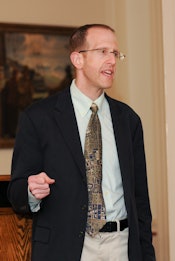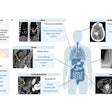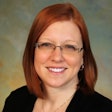
AuntMinnie.com is pleased to present the next installment of Leaders in Imaging, a series of interviews with individuals who are shaping the radiology landscape. We spoke with Dr. Howard Forman, professor of diagnostic radiology, public health, economics, and management at Yale University. This month, the American Journal of Roentgenology published a Masters of Radiology panel discussion led by Dr. Forman on the topic of radiology's role in managing healthcare cost growth.
AuntMinnie: What is the role of radiologists in holding down healthcare costs?
Forman: All of medicine could do a better job at being efficient -- we have the same ethical responsibility as any other industry. And radiologists don't have any greater role than any other physician specialty. We certainly shouldn't be wasteful, and I do think we're well aware of the fact that there are areas where imaging is wasteful. A lot of what we do is high value, but certain types of imaging in certain clinical settings are of no value or low value, and we have a responsibility to educate the clinicians ordering those tests. Often [referring physicians'] expectations about what an imaging exam can do are incorrect.
There's been real movement in the direction of imaging efficiency standards. The American College of Radiology has published its own appropriateness criteria, and the National Quality Forum and Centers for Medicare and Medicaid Services have begun to develop some of these as metrics to judge practices, which are also being used by radiology benefits management firms. But we as radiologists do still have a responsibility to use imaging efficiently, even if those groups fail.
 Dr. Howard Forman, professor of diagnostic radiology, public health, economics, and management at Yale University.
Dr. Howard Forman, professor of diagnostic radiology, public health, economics, and management at Yale University.
What contributes to radiologist resistance to focusing on educating referring physicians?
The problem is that we are not compensated for spending time with referring clinicians, but we are compensated rather well for performing and reading imaging exams. But my feeling is that as a specialty, just out of professionalism and humanism, we should be doing more of that kind of consulting. Not only will it sustain the specialty in long run, it will also provide the best possible care to patients.
And there's also resistance from referring doctors. It takes an enormous amount of effort to avoid 1%, 2%, or 3% of studies referring physicians order -- and the payback is tiny. And if you tell an emergency department doctor that a study isn't really needed, they'll most often say, "If I get sued, it's my fault, not yours." You can't change a referring physician's mind very easily when it comes to the issue of defensive medicine.
How do accountable care organizations (ACOs) fit into the radiology landscape? Are they positive?
ACOs are more of a concept than a reality right now. In the past 30 or 40 years we've gone through all these attempts to make a healthcare "system" out of something that really isn't right now. It's very difficult to align incentives appropriately in a [conglomeration of healthcare players that include] large payors, large hospital systems dominant by region, and physician groups. There's still nothing close to the full type of integration we need in this country to have an efficient delivery model. The ACO is an effort to achieve some of the integration that we don't have in the current system. Radiologists fear them because they sense that others will control the flow of funds, and we've enjoyed a lot of autonomy.
There is a reason why federal and commercial payors have targeted imaging in their cost-cutting efforts -- imaging, including all cardiac and noncardiac imaging and intervention -- comprises roughly 10% of our $2.7 trillion healthcare economy. Two hundred and seventy billion dollars is a lot of money. But I don't think we're any more of a target than, say, the pharmaceutical industry, which is a comparable segment in dollar terms.
How can radiologists use their consultant role to better effect?
Radiologists need to play an active role in implementing electronic medical records [EMRs] at our facilities. We've all been talking about it for more than 20 years now. Most institutions are truly transitioning to something that resembles EMR, and most have decision support for imaging studies that can take referring physicians [down a list of factors that would point to the particular imaging exam] -- if those factors aren't there, the exam isn't likely necessary. This kind of decision support could also be taken to an educational level, so that every time a physician orders a study, the program would state how much radiation the study will impart to the patient, and if it's too high, suggest alternatives.
What is a "quality improvement approach" to imaging, and what can radiologists do to support it?
Well, for example, we know that there are three- and fourfold variations on the number of MRIs done on patients in various parts of the country, both excessive use and low use. And that means real opportunities for savings, opportunities to monitor use at the practice, health plan, and national level and reflect on how we can better achieve what might be considered the best standard of care. You don't hear radiologists talking about why, at their practice, they do three times as many MRIs compared to some other practice. We need to ask these questions, and it may not always be comfortable.
How can radiologists play a central part of patient care going forward?
We need to see ourselves as both principles of the healthcare enterprise but also as agents for the patient as well. The fact is we may not be compensated for the latter. But since we are generally well-compensated, we have a greater responsibility to invest our resources in public health measures. I believe that there are such enormous opportunities for improvements in operating efficiency that radiologists are actually well-positioned to continue to play a central part in patient care.




















